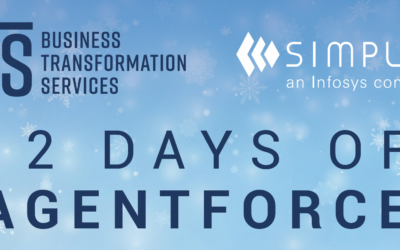“Congratulations! You’re hired.”
During the interview, you selected this candidate because, among other qualities, you could visualize a good fit within the team. Now it’s your job to help your new hire catch that vision as well.
Despite expert polls showing that onboarding improves employee retention by 82 percent, most organizations (88 percent) don’t onboard well. For instance, studies show that the majority of companies only offer one week of onboarding to new hires.
“The best employee onboarding programs extend throughout the employee’s first 90 days—and may even extend out for a full year—to ensure new hires are fully supported as they ramp to full productivity,” says Jen Dewar, a marketing consultant specializing in HR technology.
When a manager needs to create a cohesive team out of a group of strangers, here are three reasons why a solid, consistent onboarding experience is essential.
Onboarding shows empathy.
Whether it was venturing beyond the driveway without training wheels for the first time or nailing your first career role following graduation, we’ve all had our first day somewhere. And being quick to share that empathy makes a significant impact on new hires. “Put yourself in the shoes of your newest team members, and try to imagine what they could be going through,” says ted.com contributor Scott Belsky. “Are they climbing a learning curve without much support… Have they been given an ambiguous or brand-new job description? As you become aware of their challenges, make an effort to sensitize their colleagues, too.”
When the manager and coworkers share details about their first day on the job, it invites trust. It also creates opportunities for the manager to reinforce work culture and introduce solutions to common roadblocks that may hinder progress. “To cultivate compassion in the workplace, support leaders and managers who care about how their team members feel,” says the staff at Rise. “Create a culture where empathy, perhaps even more than efficiency, is rewarded. You’ll find that encouraging the first just might improve the latter.”
Customize onboarding to fit the workplace.
Technology has made the office parameters virtually boundless. So it’s not uncommon for a new hire to never personally meet the CEO or human resources manager. But that doesn’t mean a personal approach to welcoming a new employee is out of reach. With over 500 employees stationed worldwide, Simplus, a technology company, customizes the onboarding process to fit the situation. “Each new hire has a very structured onboarding process built out specifically for them,” says Joe Carr, VP of talent at Simplus. “Their manager and themselves have an on-boarding checklist that must be completed.” These checklist items are specific on a number of levels that include country, department, manager, and employee role. Checklist items range from setting up a new employee with benefits, training on how to use and navigate different system platforms, and assisting in creating an employee’s first V2MOM, which is a vision planning method that helps Simplus and its employees stay aligned.
At Simplus, every employee receives the traditional onboarding training meetings from HR, IT, their personal department, and from their manager. When a face-to-face meeting isn’t possible, Carr says managers are quick to arrange online meetings to ensure a new hire receives proper direction and support. Then, Simplus CEO Ryan Westwood hosts an hour-long meeting each month to highlight new things happening in the company. “This is brilliant,” says Carr. “I have been in on it.” During this meeting, Ryan explains the journey of Simplus and will explain the real low and high points of the company. He not only explains but shows you the current culture of the company. By the end of the meeting, no new employee should be confused on why Simplus exists, what Simplus does, and how Simplus will succeed.
Onboarding introduces social norms.
There’s the general corporate culture, which includes submitting time cards and filing expense reports. And then there’s the department or team culture, like explaining food truck Thursday is across the street, or that Friday is casual day (as long as you don’t have a meeting with the corporate office). It’s knowing the little things that keep a department functioning where bonding occurs.
“In addition to building strong relationships with their colleagues, new hires want to feel as part of the wider community within your organization. That way, they can start opening up to others and act altruistically,” says consultant Maha Khursheed.
Westwood states, “You have to fun where you work. We spend too many hours at work, and life is too short.” Simplus quite transparently invests in fun. We allocate social funds for employees that live in major hubs to get to know each other outside of work. At least once a month, we have a fun theme company meetings, like Show and Tell or Dress like your Boss.
Simplus employees utilize Slack daily to communicate to employees but not just for work. Simplus has designated Slack Channels based on employee interests such as dogs, food, snow, families, and even nerd culture. (“I like the Game of Thrones one,” adds Carr.) The goal is to encourage positive and productive support for all employees by providing connections, resources, and social outlets. Because when you are handling a workforce that stretches from the US to Australia or from the Philippines to the United Kingdom, ensuring an employee feels valued is a constant priority.
Onboarding is also the ideal time to identify co-workers’ skills that extend beyond the job description. For instance, who can you call with computer problems when IT is busy? Which employee has strong editing skills? And who can throw together an exotic work party in rapid time and under budget?
Despite the common assumption, the goal of onboarding isn’t merely informing new hires of employment information. Instead, it sets the stage to retain those employees who bring exciting new perspectives, skills, and value to the company. Not only does a company have a chance to see the value of new talent, but it also is a chance for the company to see what excites and drives new employees to join the organization.















0 Comments